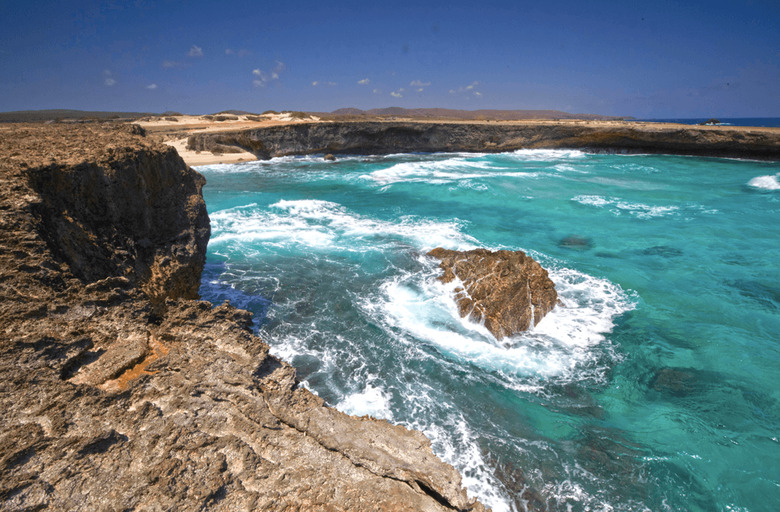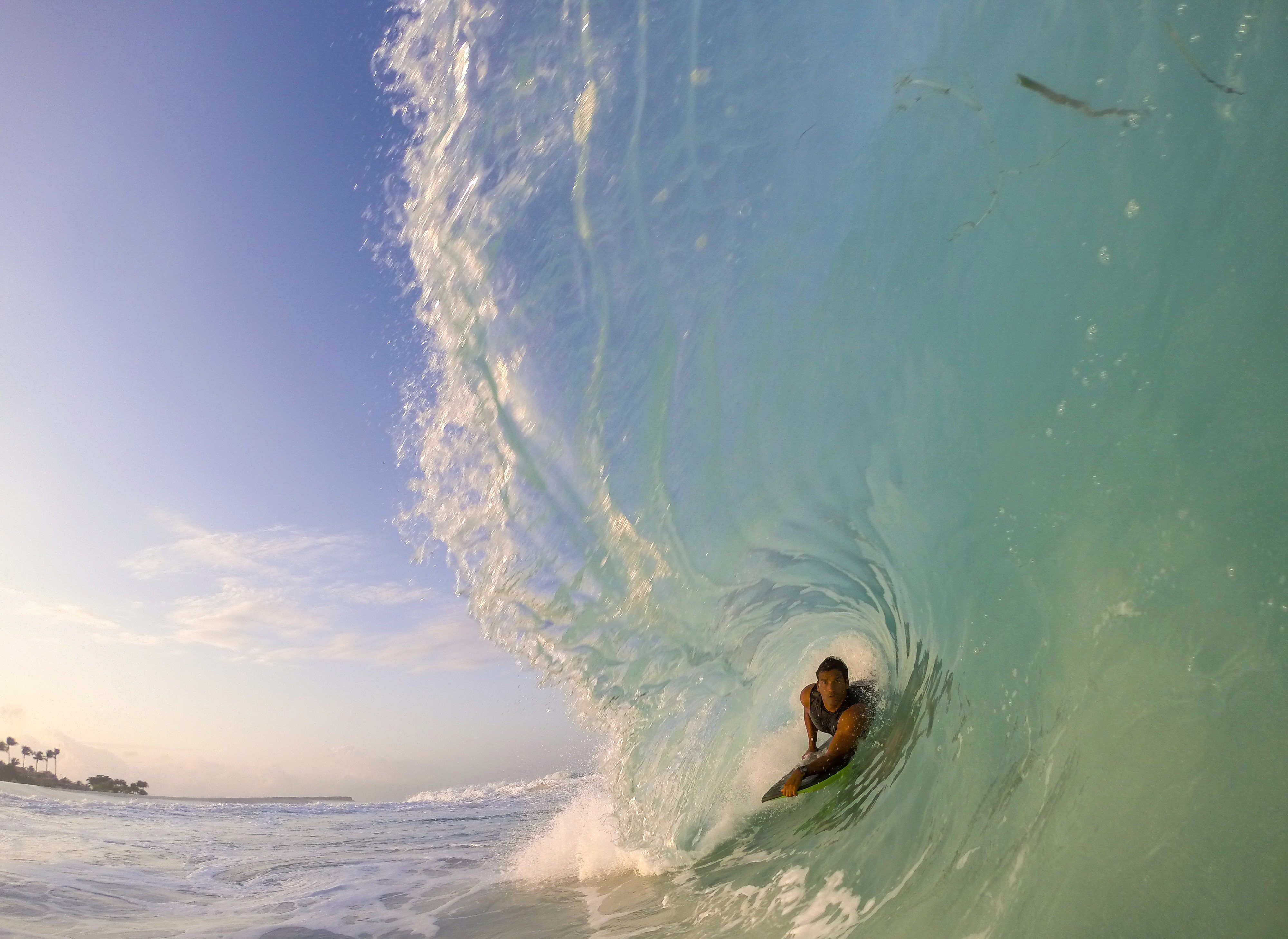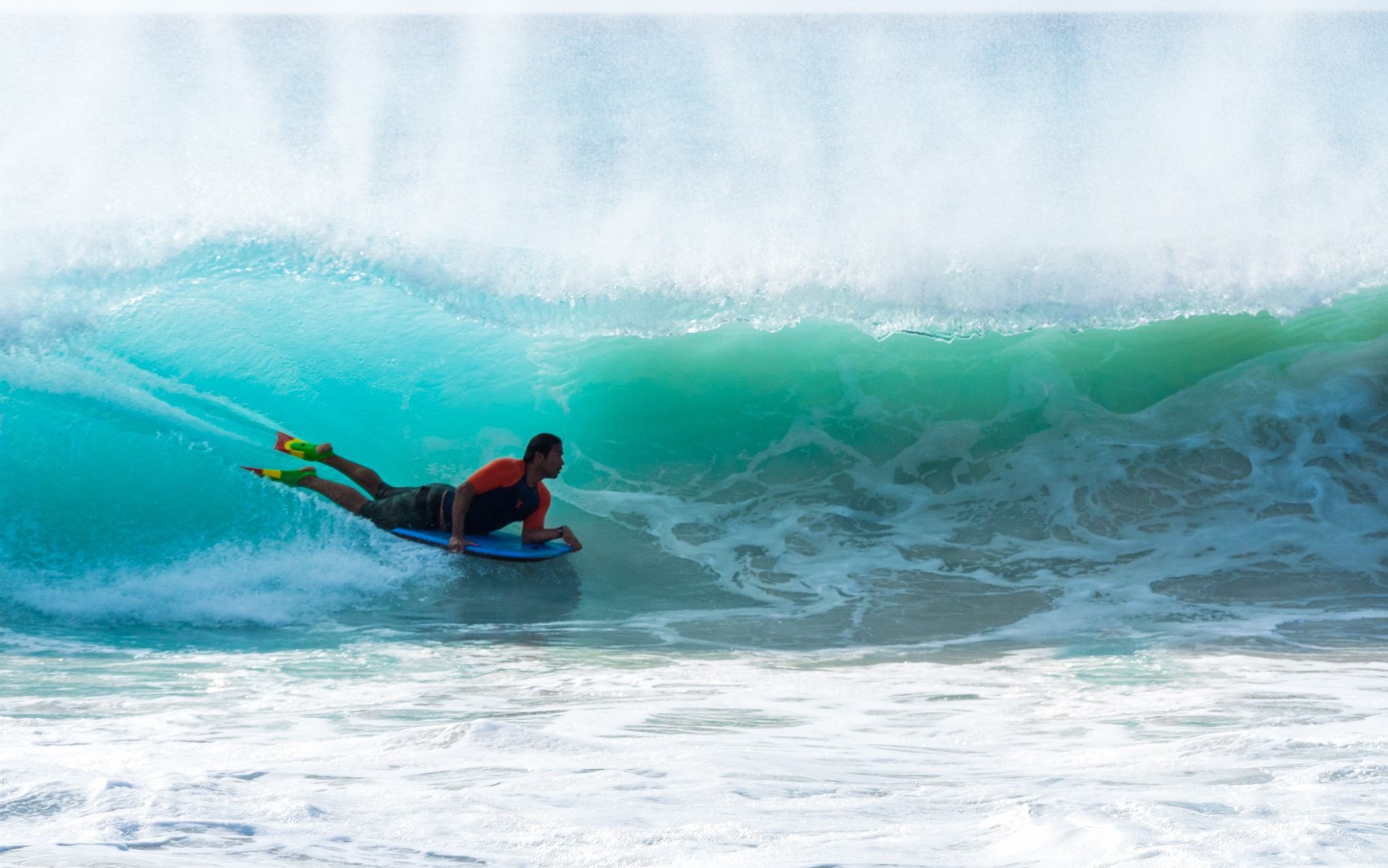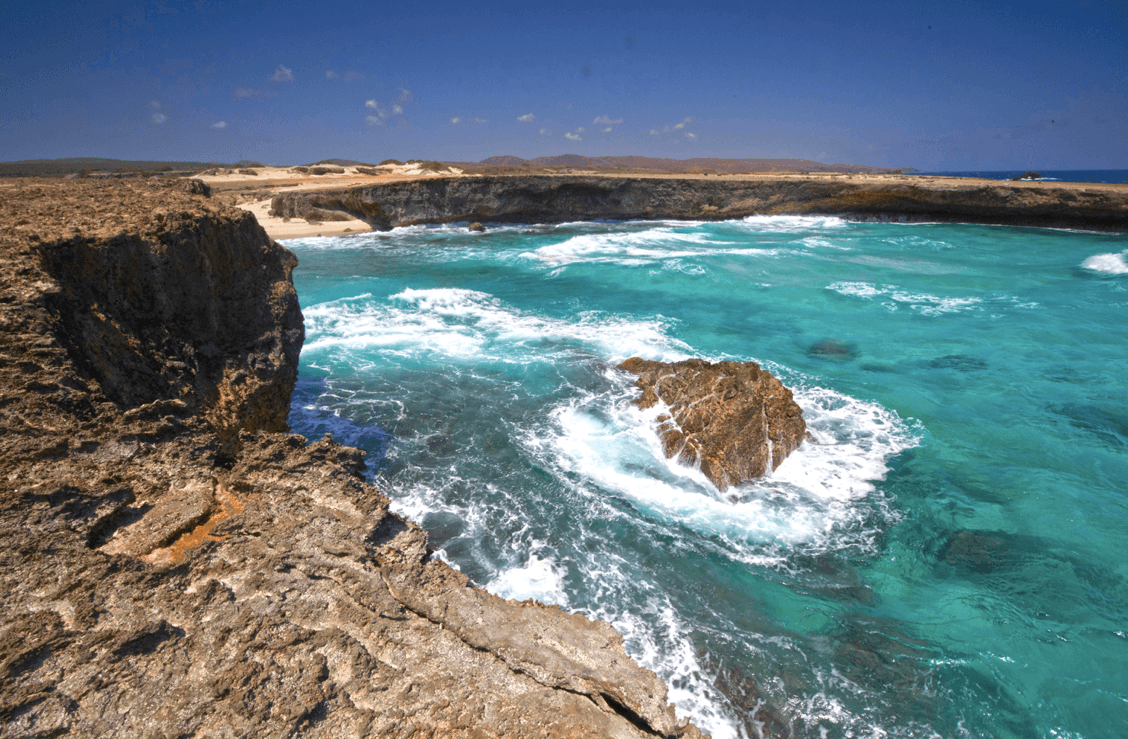The Sporting Life In Aruba
With a near-constant temperature of 82 degrees Fahrenheit, nearly any day is an ideal day to enjoy an Aruban adventure in the water or on land. Located in the southern Caribbean 15 miles north of Venezuela, the 70-square mile island is a sport-y delight with limitless potential for fun. There is something for everyone, making this "One Happy Island."
IN THE WATER
Fishing for sailfish, marlin, whaoo, bonito, in the glittering turquoise waters of Aruba takes place off shore as yachts troll the waters for game fish. Bottom fishing is also popular and takes place as soon as the engines have stopped. Fishing in Aruba is a national pastime. Today the Fundacion Centro di Pesca Hadicuradi is a gathering place for fisherman who dedicate preserving the fishing tradition.
Here local fisherman share a good time and a beer or two after a day out at sea. No need to wait for fishing season, as this is a year round pastime of locals and visitors alike. Charter companies offer full day and half day trips.
Kayaking: Get Instagram-worthy pics of Aruba's pristine coastline from a kayak. Glide along lush mangrove forests and the alluring Spanish Lagoon, where pirates are said to have sailed. Local guides not only lead the tour but will regale first-timer and advanced kayakers with Aruban folklore and kayaking tips.
Snorkeling: There are a plethora of placid places to snorkel colorful reefs and majestic shipwrecks. Mangel Halto Beach in Pos Chiquito on the southeast coast has calm, shallow waters that are rich in sea life thanks to a network of mangroves, making this secluded Caribbean beach perfect for snorkeling. Venture to the edge of the reef to see parrot fish, yellowtail snapper, sergeant majors and blue tangs. Divers can dive into the deep water beyond the reef to see alcyonacea, sponges, anemones, octopi, moray eels, and barracuda. Slightly north of the calm waters of Palm Beach, the shallow, calm crystal-clear waters of Boca Catalina and Arashi Reef feature brain and star coral, sea fans, parrotfish, angelfish, eels, barracudas, and octopus. The narrow Arashi Beach is a favorite snorkeling and swimming spot among locals because of the gentle currents and vibrant marine life here. The narrow stretch of Malmok Beach on the northwest coast is another snorkeling spot favored by catamaran and sailboat drivers, who stop in the shallow, clear waters for snorkeling excursions. For travelers with kids in tow, Baby Beach, a half-moon shaped beach located in a calm, shallow lagoon at the southern tip of Aruba is the best place for swimming and snorkeling to admire coral and tropical fish.
SCUBA Diving: Aruba has more than 20 dive spots, with dive sites ranging from 20 to 100 feet, making it the wreck diving capital of the world. Aruba offers a duo of World War II-era shipwrecks submerged just yards offshore. The "ghost ship" Antilla Wreck, a 400-foot-long German freighter used by the Germans during World War II, is the largest shipwreck dive in the Caribbean. Scuttled in 1945 to prevent seizure by Dutch marines, the wreck is 500 yards offshore and 60 feet below the surface. The tanker SS Pedernales was torpedoed and sunk by a German U-boat en route to a refinery in Aruba. The center portion of the vessel still remains submerged 25 feet below sea level off the shore of Palm Beach.
Standup paddle boarding: "Walk" on water just off Palm Beach in the northwest coast and Mangel Halto Beach along the western coast. Whether beginners or seasoned enthusiasts, paddlers can work on their tans while getting a full body workout paddling against the trade winds while watching the sunset on the northwestern coast or taking an ecotour of the island's idyllic mangroves. Paddlers seeking peace and a challenge can try Standup Paddle Boarding yoga classes, which challenge the mind, body, and soul.
Kite Surfing & Windsurfing: Aruba's wind, water, and weather conditions make it one of the top destinations for watching kite surfers and windsurfers jump and loop above the strong currents. The semi-circular, reef-protected Boca Grandi on the eastern side of Aruba's southern tip wraps along the bay, harnessing steady trade wind and surf conditions that are perfect for advanced kite surfing and windsurfing. The pebbly strip of Hadicurari Beach, or Fisherman's Huts, along the northwestern coast is the location for the Aruba Hi-Winds, the largest windsurfing event in the Caribbean, and its shallow waters are populated with kite surfers year round.
ON LAND
Horseback riding: Aruba's typography ranges from sand dunes to picturesque plains, making it equally welcoming for riders of all abilities. The island offers four options for horseback riding. The Gold Mine Ranch offers beach and ocean coastal tours while Rancho La Ponderosa offers scenic tours for riders of all skill levels. Rancho Loco is an equestrian center that offers riding lessons for all levels and tours to Conchi (Natural Pool) and Arikok National Park and romantic sunset tours along the northeast coast. Rancho Daimari in Arikok National Park offers the island's only traffic-free horseback rides past sand dunes, flora, and fauna.
Mountain biking: It might be surprising to find mountain biking on a compact Caribbean island that is mostly flat; however, mountain bikes are used to navigating the sandy roads here. Cyclists stay cool in the semi-arid tropical marine climate thanks to Aruba's steady trade winds. Bike rentals are located throughout the island. There are trails that run along the northern coast, which is punctuated with points of interest like Alto Vista Chapel, California Lighthouse, Arashi Beach, Boca Catalina, and Malmok Beach.
Hiking: Sunrise beach walks and strolls along the north coast are beloved by beachgoers; however, the most popular place to hike is Arikok National Park, a natural preserve on the eastern coast that occupies one-fifth of the island. The park has 29 miles of rocky trails, split into three levels, from beginner to advanced. Free guided tours with park rangers can be arranged in advance. The advanced trail takes hikers on a five-hour journey across rocky terrain, and past hidden beaches, natural bridges, pools, cave paintings, and indigenous flora like aloe and divi-divi trees and cacti, and fauna like goats, donkeys, rattlesnakes, Aruban burrowing owls, and Aruban parakeets to Jamanota, the island's highest point 620 feet high, which offers panoramic views of the island's northern and southern shores. Additional hiking options within the park include a trio of caves: the limestone Guadirikiri Cave, which is famous for the bursts of natural sunlight that seep through limestone holes in the roof of the cavern, the 300-foot-long Huliba Cave, nicknamed the "Tunnel of Love" because of its heart-shaped opening, and the shallow Fontein Cave, remarkable for the decorative brown-red Arawak pictographs etched on the walls and ceiling by the Amerindians. Don't miss exploring the Ayo Rock Formations, haphazardly positioned stone boulders adorned with rock drawings that were considered a sacred site by the island's original inhabitants. After a day of hiking, take a refreshing dip in the cool waters of shell-shaped Conchi (Natural Pool), nestled at the base of the northern shore cliffs within Arikok National Park. Visitors can also trek the national park's ravines and deserted terrain via horseback to get to the natural, tranquil pool that is surrounded by lava rocks and perennially battered by the tide. The park is also easily traversed via bicycle or 4X4 vehicle.



